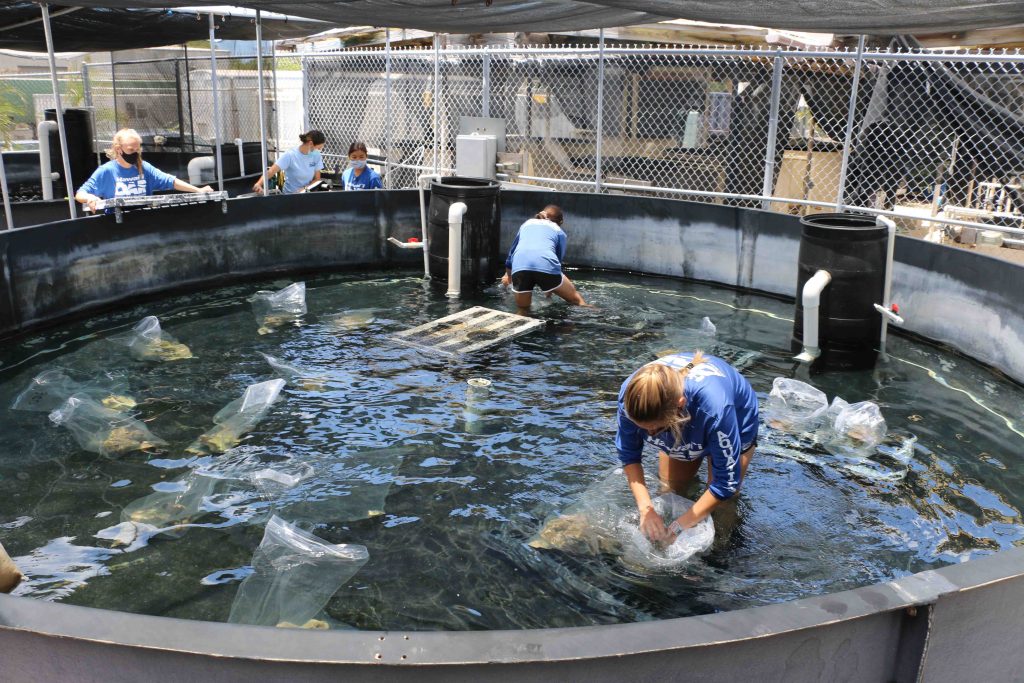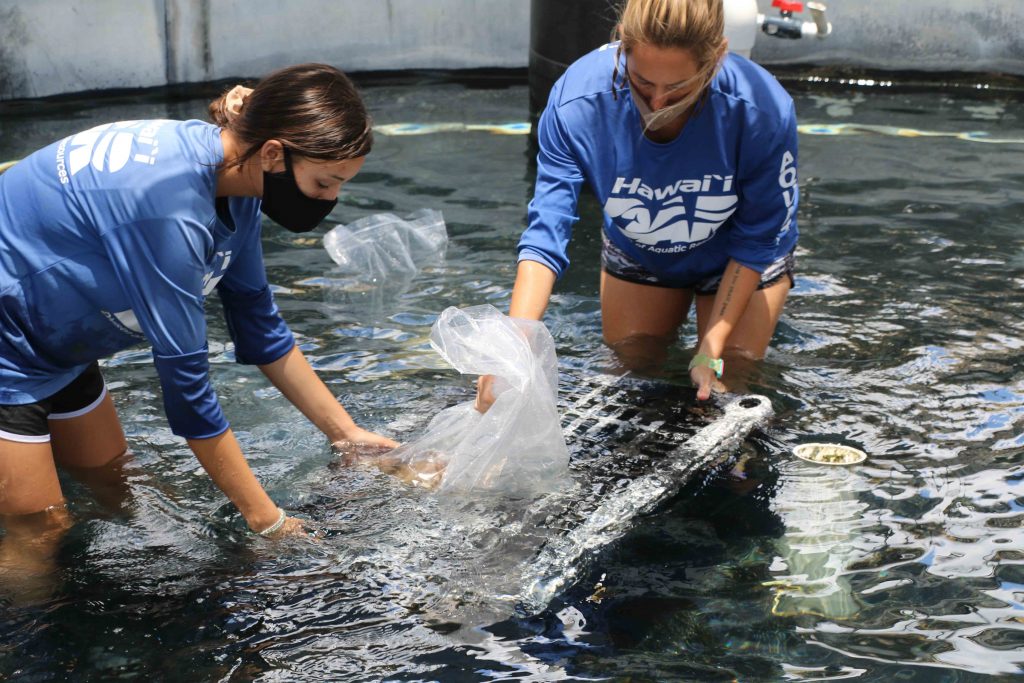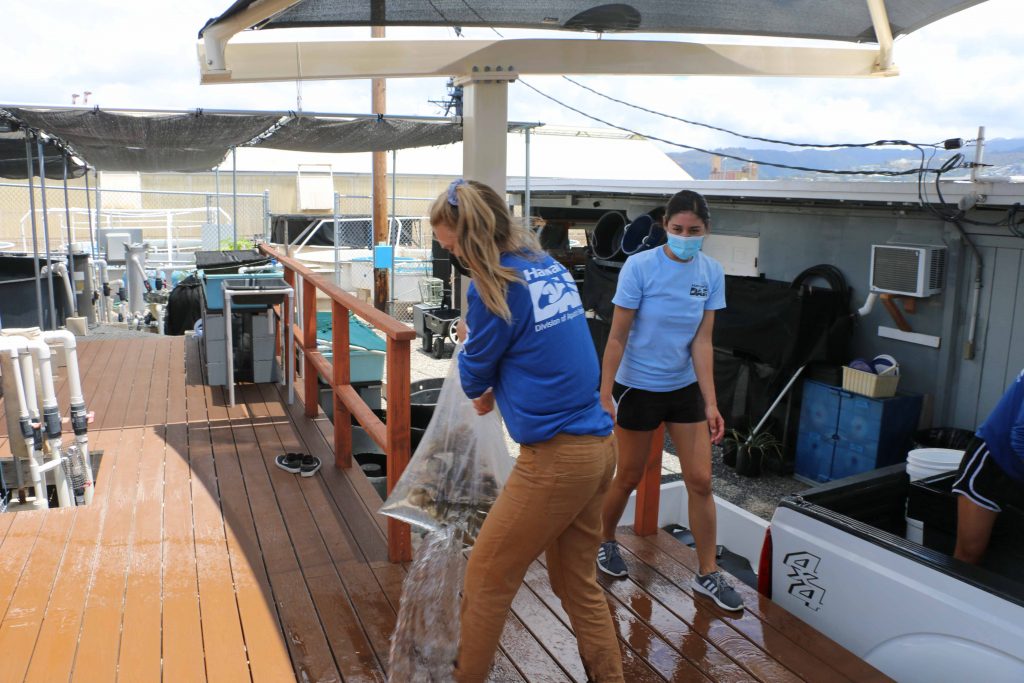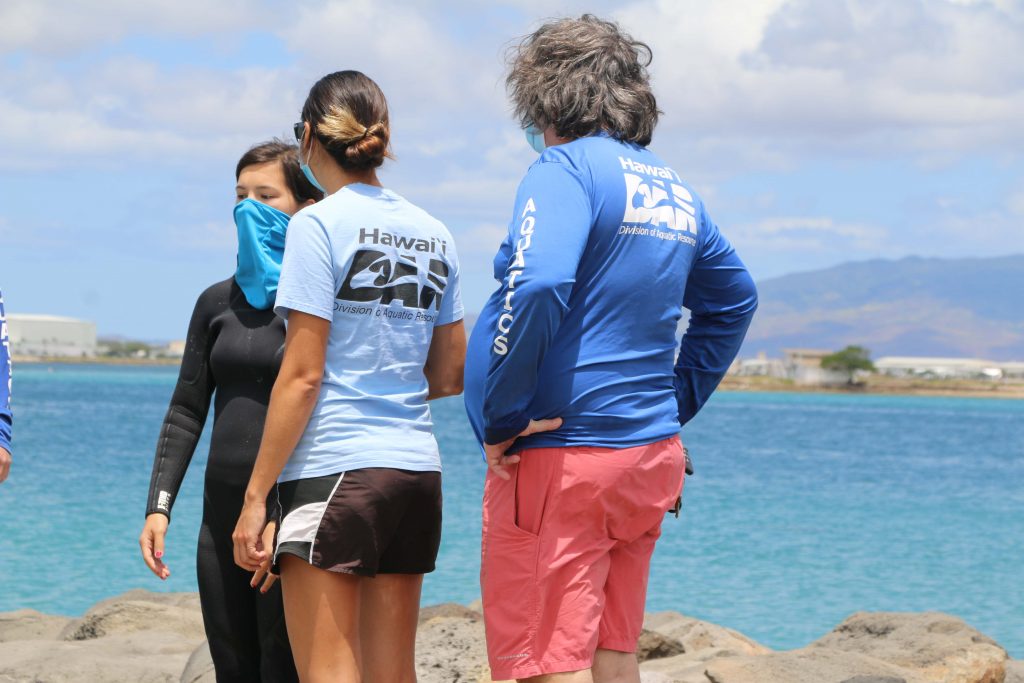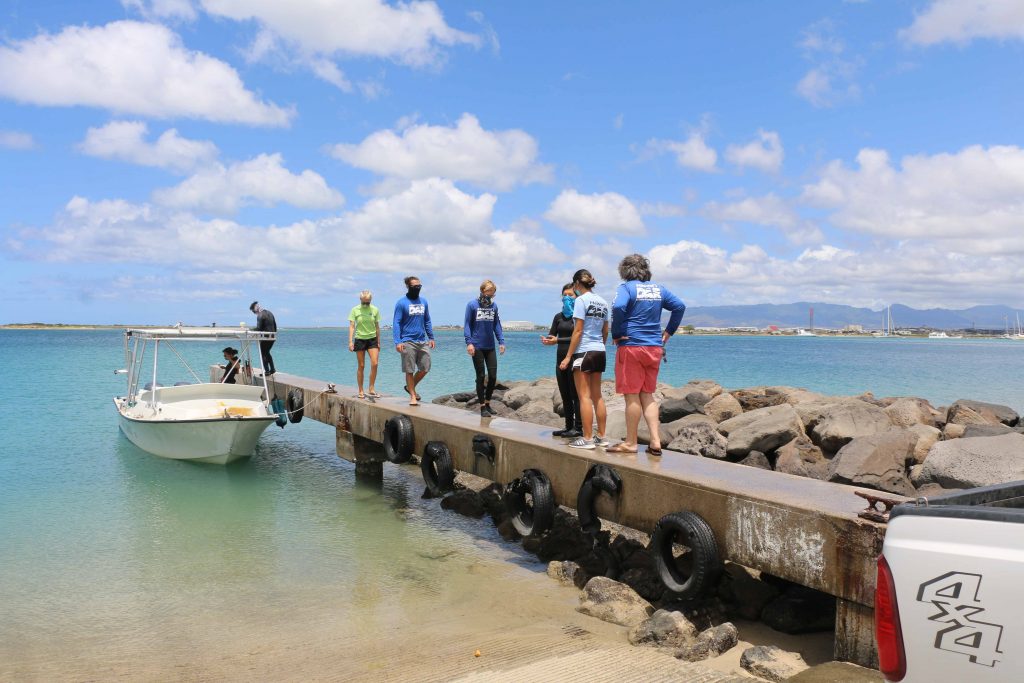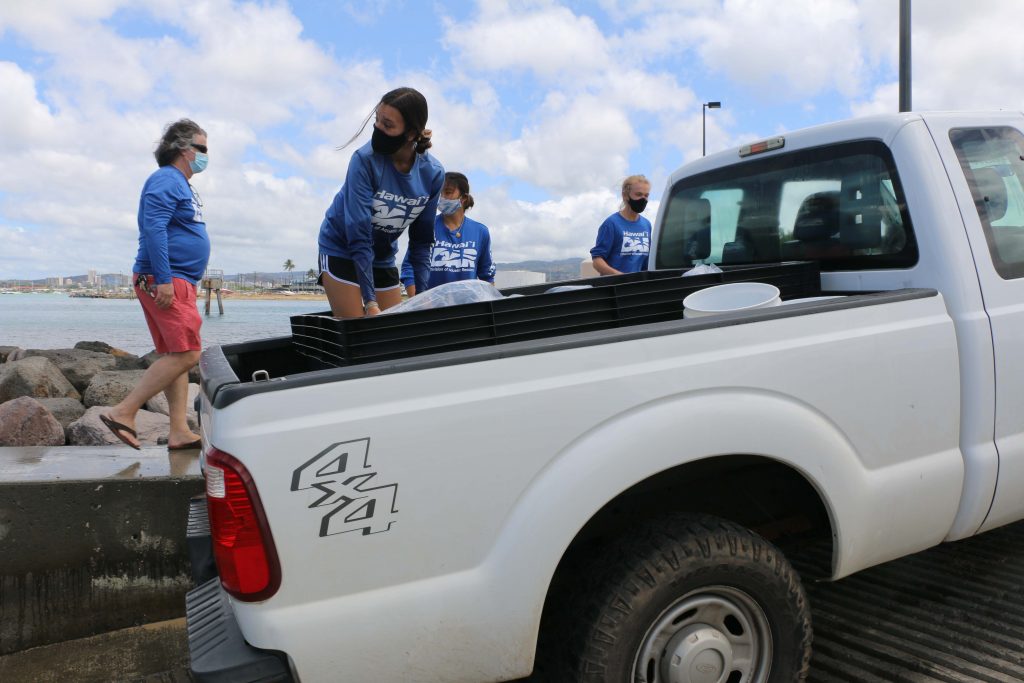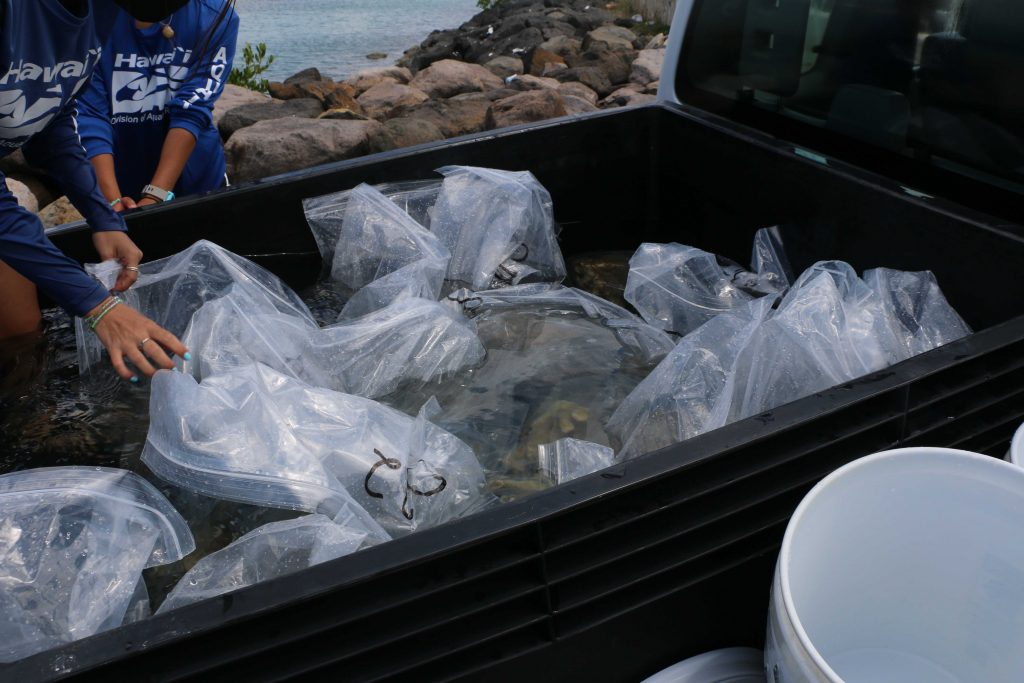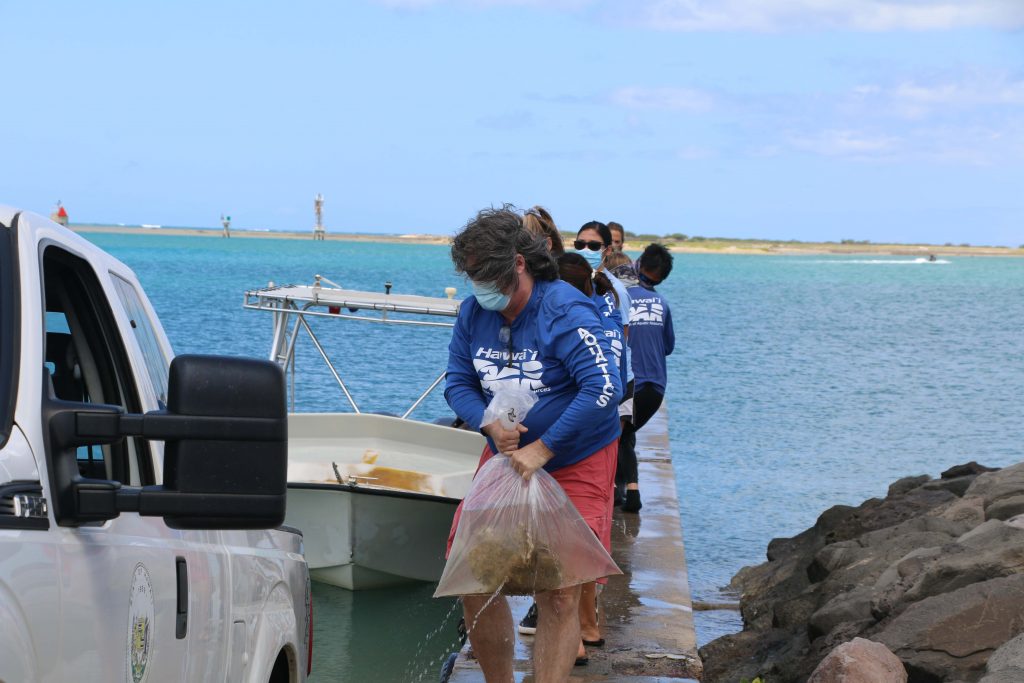Emergency Restoration Action Taken to Save Corals Damaged During Dredging
The DLNR Division of Aquatic Resources has taken emergency action in an effort to salvage highly valuable corals severely damaged in Honolulu Harbor’s channel. The damage took place two weeks ago and was caused by a dredging platform’s anchor and cable dragging over numerous coral colonies, according to department reports.
Department officials say an emergency restoration is necessary to prevent additional damage. “Freshly broken corals and reef substrate are susceptible to being moved around by surf and currents. This can cause further damage when corals roll and collide with other corals and substrate,” according to DLNR.

DAR divers worked quickly to assess which corals can be reattached and which specimens should be taken to the state coral nursery at the Ānuenue Fisheries Research Center.
Nursery Director David Gulko refers to the emergency restoration action as triage. “We selectively collected broken pieces seven to 14 inches in size. Larger corals were prioritized for reattachment at the site,” said Gulko.
He said smaller-sized corals are tough to collect in short time frames because they get tumbled around in the surf. Gulko noted that the only fragments smaller than 7 inches that will be collected are ones recognized as rare Hawaiian species, to be held at the Hawai’i Rare Coral Ark at the nursery.
During recovery, divers selected broken pieces with the highest amount of live coral present. The fragments are carefully documented, photographed, and measured before being placed into numbered bags. Bins, holding the bags, were then rushed to the coral nursery.
At the AFRC, Nursery Specialist, Chelsea Wolke coordinated the careful placement of the corals into a holding tank. Inside the tank, recovered corals are again measured, photographed and assigned unique chain-of-custody numbers to track their time at the nursery.
No decision has been made about whether collected specimens will be fast-grown in the nursery into larger corals for later out-planting or returned to the site after the emergency restoration is completed.





